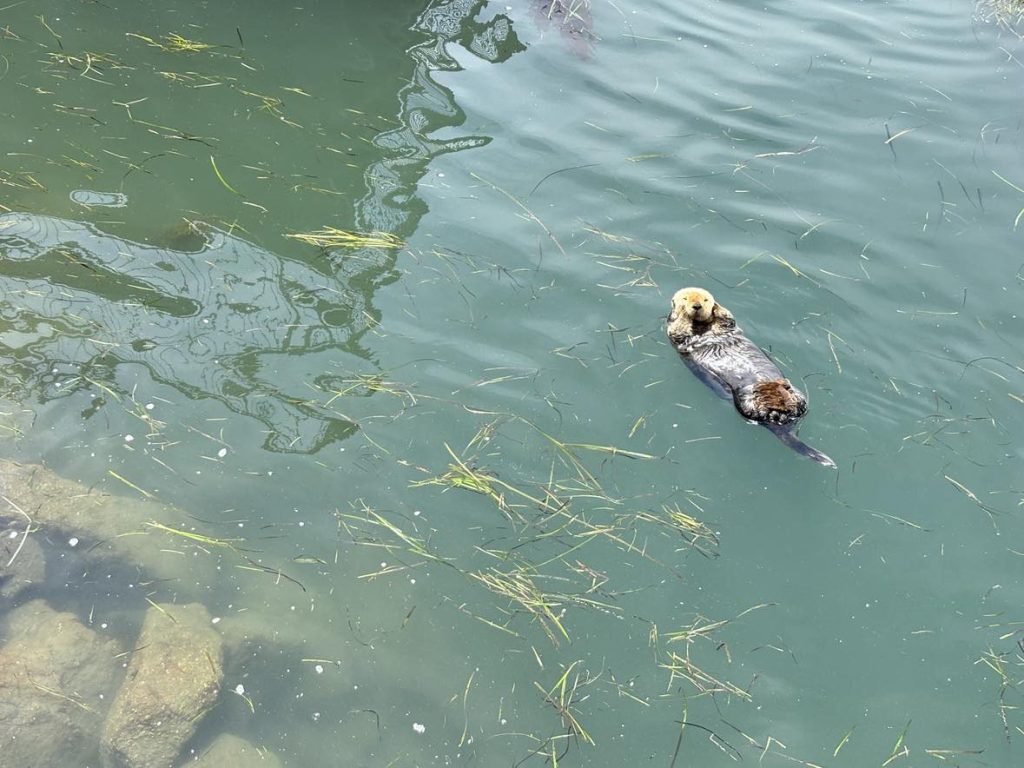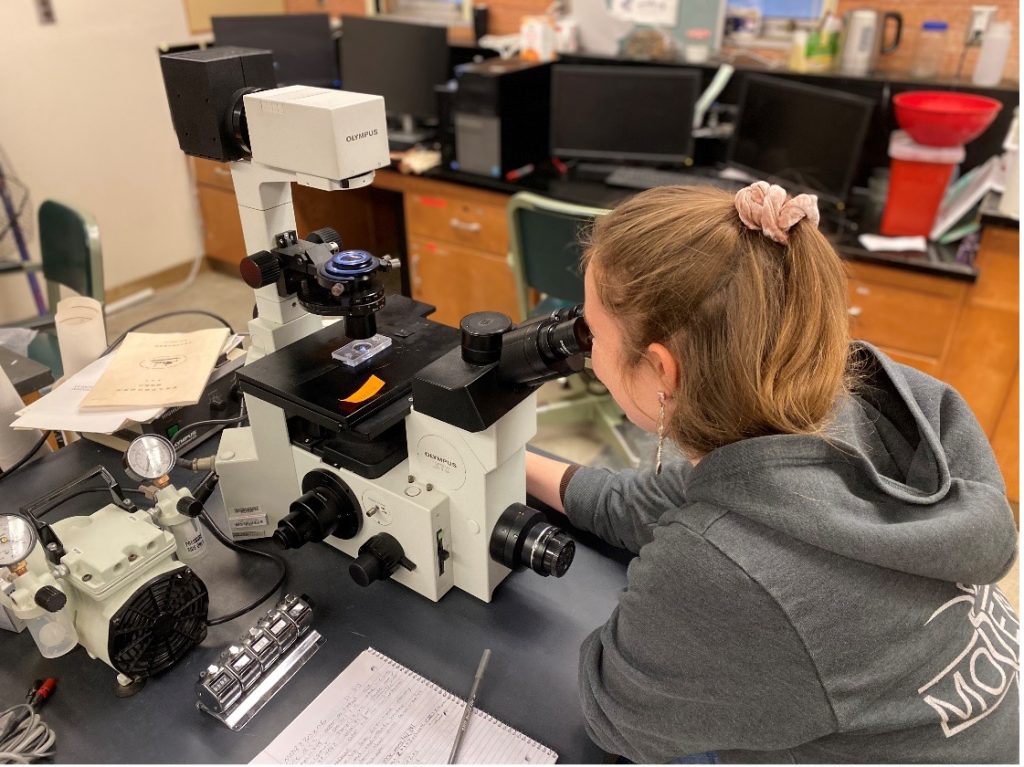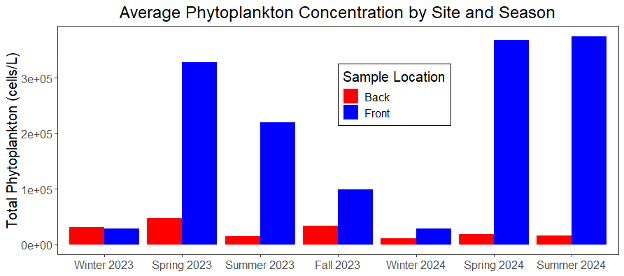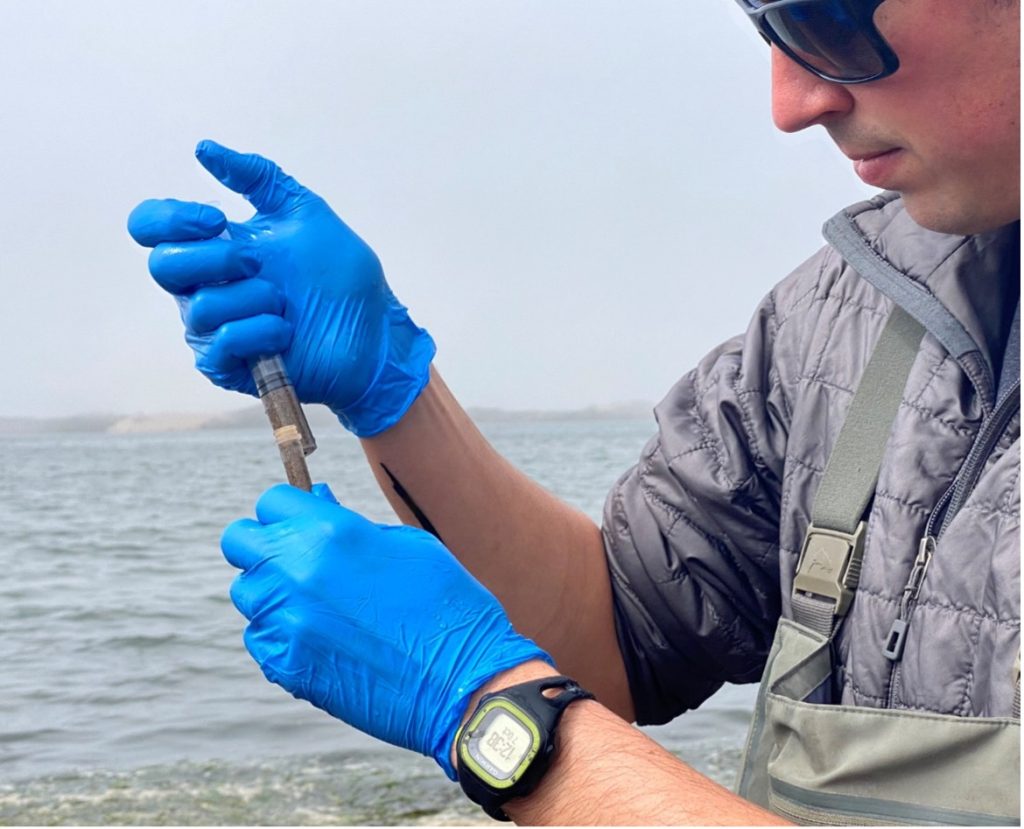When looking out at the estuary from the shoreline, it doesn’t take very long to spot the local wildlife going about their daily routines. You might see otters floating on their backs cracking shells open for lunch, catch a glimpse of pelicans flying overhead, or the cacophonous barking of a group of sea lions lounging on a nearby dock. While these creatures are all unique, one thing they have in common is a reliance on phytoplankton. Phytoplankton are the unicellular algae that form the base of the estuary’s food web. These microscopic drifters convert sunlight into energy shaping the foundation of the food chain and fueling life of all shapes and sizes.

Phytoplankton are essential for the ecological health of estuaries; however, not all species are equally beneficial. The term “phytoplankton” is broad and includes many different types, some of which form Harmful Algal Blooms (HABs). As the name implies, these blooms can result in the production of harmful toxins, mass mortality of aquaculture and fisheries stocks, and neurological illnesses in marine mammals. There are numerous documented cases of HABs and their negative impacts, but their exact causes are poorly understood. For this reason, monitoring plankton in Morro Bay is valuable for characterizing the microbial community to better understand the environmental drivers behind HABs and their impact on wildlife.
Plankton Monitoring Partnership
Starting in January 2023, the Estuary Program partnered with Cal Poly’s Plankton Ecology & Coastal Oceanography research lab to expand an existing phytoplankton monitoring effort. The project involves weekly sampling at the north T-Pier and at Pasadena Park. These two sites capture the plankton community in the front bay and back bay respectively, to better understand how small-scale differences across the estuary can affect phytoplankton.

To date, Dr. Alexis Pasulka of Cal Poly, a team of student researchers, and Estuary Program staff have collected over 180 water samples, representing nearly 90 weeks of sampling from both monitoring sites. The team uses microscopes to identify and tally up the different species present. They then share the results with the public through the California Harmful Algal Bloom Monitoring and Alert Program (CalHABMAP), which displays the latest data for the “Morro Bay Front Bay” and “Morro Bay Back Bay” sites on their online dashboard.
Seasonal and Spatial Patterns
With nearly two years of weekly samples analyzed, the Cal Poly researchers have observed distinct seasonal patterns in Morro Bay’s plankton assemblage. In the spring, upwelling brings cold nutrient-rich water to the coastline which promotes the growth of a subset of plankton called diatoms. Diatoms are an essential food source for zooplankton and larval fish and are generally associated with a healthy, productive ecosystem. In the late fall and summer, warmer water contributes to blooms of a different category of plankton, the dinoflagellates. Many species of dinoflagellates are known to form Harmful Algal Blooms, producing toxins that can negatively affect wildlife.

Along with seasonal differences, the phytoplankton community exhibits spatial differences between the front bay and back bay sample sites. Throughout most of the year, phytoplankton are more abundant in the front bay, where the water is relatively clear, and incoming tides bring a steady stream of nutrients. In the back bay, the shallower conditions lead to cloudier water limits the availability of light that plankton need for energy and growth. So, these differences in light and nutrient availability between the front and back bay appear to be the primary drivers behind the spatial difference in plankton abundance.

Upcoming Research and Community Involvement
All of the hours at the microscope identifying and counting plankton have provided valuable insight into this important but easily overlooked community of organisms. However, questions still remain about the broader microbial world, including species that can’t be seen with a microscope. To help fill this knowledge gap, the project will soon incorporate genetic analysis. During weekly monitoring, samplers have been collecting water and sediment samples for DNA sequencing. This will provide a more complete snapshot of the microbiome. Sequencing will not only uncover trends in phytoplankton, but in bacterial communities as well. These communities are known to interact with plankton and contribute to their potential to form harmful blooms.

Starting in November, the Estuary Program will incorporate a group of community volunteers into the project to aid in sample collection and processing. Community involvement is a cornerstone of the Estuary Program’s mission. We are incredibly thankful for all volunteers, past and present, who have supported our monitoring projects. We are always taking new volunteers through our volunteer form on our website! If you’d like to learn more about plankton research in Morro Bay, check out this educational poster describing the plankton monitoring project, and stay tuned for future blog posts!
Help us protect and restore the Morro Bay estuary!
- Donate to the Estuary Program today and support our work in the field, the lab, and beyond.
The Estuary Program is a 501(c)3 nonprofit. We depend on funding from grants and generous donors to continue our work. - Support us by purchasing estuary-themed gear from ESTERO. This locally owned and operated company donates 20% of proceeds from its Estuary clothing line and 100% of Estuary decal proceeds to the Estuary Program. Thank you, ESTERO!
- Purchase items from the Estuary Program’s store on Zazzle. Zazzle prints and ships your items, and the Estuary Program receives 10% of the proceeds.
- Subscribe to our seasonal newsletter: Between the Tides!
- We want to hear from you! Please take a few minutes to fill out this short survey about what type of events you’d like to see from the Estuary Program. We appreciate your input!